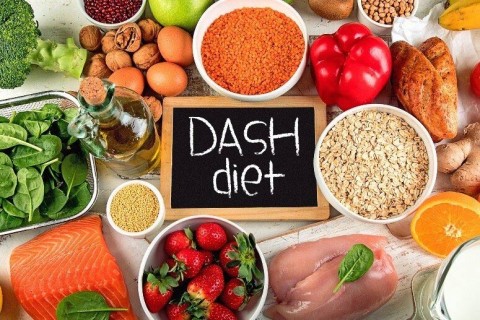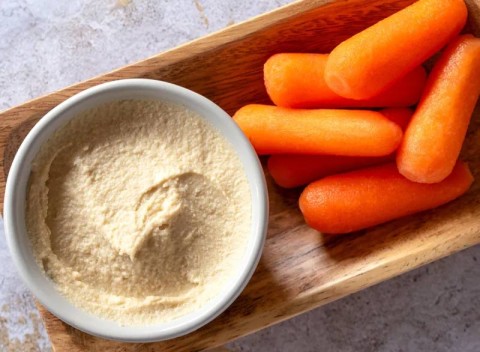The Best Diets for Heart Health

In addition to regular exercise and not smoking, diet is one of the best ways to protect your heart. Here are the best diets for heart health.
Office Deployment Tool (ODT) is a command-line tool you can use to download and deploy Office 365 ProPlus on client computers. ODT provides more control over Office installation: you can specify which products and languages are installed, how the product is updated, whether or not the installation experience is displayed on the user's computer.
Download the Office Deployment Tool and run its exe file, containing the Office Deployment Tool file (setup.exe) and sample configuration (configuration.xml). Before using ODT to download or install Office, we encourage you to download the latest version.
Office Deployment Tool consists of two files: setup.exe and configuration.xml. To work with this tool, you can edit the configuration file to determine the options you want, and then run setup.exe from the command line. For example, you can edit the configuration file to download a 32-bit version of Office English or edit to install a 32-bit version of Office English to automatically accept the EULA without Publisher.
When running the Office Deployment Tool , you need to provide the configuration file location and select the ODT running mode:
You can also use Help mode to read command line help for this tool.
Follow these steps to download the Office 365 ProPlus installation file from the Office Content Delivery Network (CDN).
When creating the configuration file, we encourage you to start with a template file and update it with the appropriate environment options. You can start by copying and pasting the form below into the text file, save it with the name of your choice, and then edit the XML elements and attributes to determine the options you want.
In this example, the configuration file downloads the installation file for 32-bit English version of Office 365 ProPlus and Visio Pro for Office 365 to \\ server \ share on the network.
<Configuration>
<Add SourcePath = "\\ server \ share" OfficeClientEdition = "32">
<Product ID = "O365ProPlusRetail">
<Language ID = "en-us" />
</Product>
<Product ID = "VisioProRetail" >
<Language ID = "en-us" />
</Product>
</Add>
</Configuration>
From the command line suggestion, run the ODT (.exe) file in download mode with the same reference to the saved configuration file. In this example, the configuration file is named downloadconfig.xml :
setup.exe / download downloadconfig.xml.
After running this command, go to the selected download location in the configuration file to find the Office folder and the corresponding files in it. If you're having problems, make sure you have the latest version of ODT. You can also solve this problem by reviewing the log file in the % temp% directory .
You can use the Office Deployment Tool to download Office 365 ProPlus installation files from a local source on the network instead of from the Office Content Delivery Network (CDN). By doing this, you can save a copy of multiple languages and main products for Office and distribute only the language and product needed for other locations on the network.
To download from a local source, follow the steps for downloading Office with ODT, but include the download link configuration file. For example, this configuration file downloads the 32-bit English version of Office 365 ProPlus from \\ servera \ share ( DownloadPath file ) to \\ serverb \ share ( SourcePath file ):
<Configuration>
<Add SourcePath = "\\ serverb \ share" OfficeClientEdition = "32" Version = "16.0.6741.2056" DownloadPath = "\\ servera \ share">
<Product ID = "O365ProPlusRetail">
<Language ID = "en -us "/>
</Product>
</Add>
</Configuration>
Note, now you have to choose the version when using DownloadPath.
After downloading the installation file of Office 365 ProPlus, follow these instructions to install Office on the client computer. As part of the installation, you can select the product you want to install.
When creating the configuration file, start with the template file and update it with the option appropriate to the working condition. You can start by copying and pasting the form below into the text file, saving it with the chosen name, and then editing the XML elements and attributes to determine the desired option.
For example, the configuration file that installs the English 32-bit version of Office 365 ProPlus does not need Publisher:
<Configuration>
<Add SourcePath = "\\ Server \ share" OfficeClientEdition = "32">
<Product ID = "O365ProPlusRetail">
<Language ID = "en-us" />
<ExcludeApp ID = "Publisher" />
</ Product>
</Add>
<Display Level = "None" AcceptEULA = "TRUE" />
</Configuration>
The location of the Office installation file is \\ server \ share . The display level is None , which means you will not see any user interface during installation and AcceptEULA is set to TRUE - Users do not have to click to accept the EULA during installation.
From a command prompt, run ODT (.exe) in configuration mode with the same reference to the saved configuration file. In the following example, the configuration file is named installconfig.xml :
setup.exe / configure installconfig.xml
You must run the .exe file from a client computer that wants to install Office and you must have local admin rights on that computer.
After running this command, you should see the Office installation run (unless you set the display to: None). After completing the installation, this command prompt will display " Products successfully configured. " If you encounter problems, make sure you have the latest ODT version. You can also fix the problem by reviewing the log file in the % temp% and % windir% \ temp directories .
You can use the Office Deployment Tool to update client computers after installing Office 365 ProPlus. There are two ways to do this:
To change the location of the client receiving the update, run ODT in configuration mode and specify the update path in the configuration file. For example, automatically update Office 365 ProPlus from the \\ server \ updates network share, including the following path in configuration.xml file:
Note: This article does not cover all issues related to Office update management in the organization.
When installing Office 365 ProPlus, you can exclude unwanted products. To do this, in addition to following the steps to install Office with ODT, attach ExcludeApp in the configuration file. For example, this configuration file installs all Office 365 ProPlus products, except Publisher :
<Add SourcePath = "\\ Server \ share" Version = "15.1.2.3" OfficeClientEdition = "32">
<Product ID = "O365ProPlusRetail">
<Language ID = "en-us" />
<ExcludeApp ID = "Publisher" />
</Product>
</Add>
If you already have Office 365 ProPlus installed, you can also use ExcludeApp to remove previously installed products. For example, the aforementioned configuration file moves Publisher from an earlier Office installation.
You can also remove the entire language version of Office 365 ProPlus as follows: Follow the steps to exclude the Office installation product with ODT, but replace the configuration file with a file using the Remove component . For example, this configuration file removes the Spanish version of Office 365 ProPlus:
<Configuration>
<Remove>
<Product ID = "O365ProPlusRetail">
<Language ID = "es-es" />
</Product>
</Remove>
</Configuration>
OneDrive automatically installs according to Office 365 ProPlus, Word, Excel, PowerPoint , Publisher, Visio, and Skype . If you don't want to install OneDrive with these apps, use ExcludeApp:
<Add SourcePath = "\\ Server \ share" Version = "15.1.2.3" OfficeClientEdition = "32">
<Product ID = "O365ProPlusRetail">
<Language ID = "en-us" />
<ExcludeApp ID = "OneDrive" />
</Product>
</Add>
When using ODT, you can automatically set the Office language to match the language displayed in the client operating system. To do this, use Language ID = "MatchOS" in the configuration file.
For example, the configuration file installs a 32-bit version of Office 365 ProPlus with the language of the client operating system - English for clients with display languages English, Japanese for Japanese clients, etc.
<Configuration>
<Add OfficeClientEdition = "32">
<Product ID = "O365ProPlusRetail">
<Language ID = "MatchOS" />
</Product>
</Add>
</Configuration>
After installing Office, you can use ODT to install additional language packs for Office. To do this, follow the steps to install Office with ODT, but use the new configuration file that uses " LanguagePack " as the product ID and indicate the language to be added.
By default, ODT will install the language from where Office updates. If you want to install the language from another source location, select the source path in the configuration file.
Step 1: Download the Office installation file in the language you want to add
If Office in your organization updates from a local source, you must download the Office installation file for the language you want to add.
Step 2: Create a configuration file to add to the language pack
When creating the configuration file, it is best to start with the template file first and update it with the appropriate options. You can start by copying and pasting the example below into a text file, saving it as a name of choice, and making sure that OfficeClientEdition and the language ID contain the things you want.
In this example, the configuration file installs the French and Japanese language packs:
<Configuration>
<Add OfficeClientEdition = "32">
<Product ID = "LanguagePack">
<Language ID = "fr-fr" />
<Language ID = "ja-jp" />
</Product>
</Add>
< / Configuration>
Step 3: Run the ODT (.exe) file in configuration mode
From a command prompt, run the ODT installation file in configuration mode referring to the saved configuration file. In the following example, the configuration file is named installlanguage.xml : setup.exe / configure installlanguage.xml.
You must run the .exe file from the client computer to install Office and you must have administrative rights on that computer.
As part of the deployment, you can define application settings for Office 365 ProPlus, including VBA Macro notifications, default file location and formats. To do this, you deploy Office using standard steps in installing Office 365 ProPlus, but include application settings in the configuration file.
To create the configuration file, it is best to use the Office Customization Tool for Click-to-Run (Preview), a web application with a complete UI. Note that this tool is still in the "preview" stage, so there will be many changes in the future:
In this example, the configuration file installs Office 365 ProPlus English 32-bit and displays the Trust Bar for all VBA macros in Excel.
<Configuration>
<Add OfficeClientEdition = "32" Channel = "Broad">
<Product ID = "O365ProPlusRetail">
<Language ID = "en-us" />
</Product>
</Add>
<AppSettings>
<User Key = "software \ microsoft \ office \ 16.0 \ excel \ security"
Name = "vbawarnings"
Value = "3"
Type = "REG_DWORD"
App = "excel16"
Id = "L_VBAWarningsPolicy" />
</AppSettings>
</Configuration>
This file is created with the Office Customization Tool for Click-to-Run (preview). For more detailed information on application setup, explore the options included in the tool.
You can apply new application settings to client computers that have Office 365 ProPlus installed without having to change any deployment settings. To do this, create a configuration file containing application settings and run ODT in custom mode. In addition to installing applications, this mode rejects all other configuration file settings.
setup.exe / customize installappsettings.xml
You must run that exe file from the client computer to install Office. Of course, you need to have local admin rights on that computer.
In addition to downloading and deploying Office 365 ProPlus, you can also use the Office Deployment Tool to create App-V packages. Do this as follows: update the configuration file, then run ODT in Packager mode. You must create App-V packages on computers that have a clean operating system installation.
Step 1: Create a configuration file
Encourage starting with the sample file (example) and updating it with options appropriate to the working environment. You can start by copying and pasting the example below into a text file, naming and saving it, and then editing XML elements and attributes to specify the options you want.
In this example, the configuration file creates an App-V package from the 32-bit English version of Office 365 ProPlus without Publisher:
<Configuration>
<Add SourcePath = "\\ Server \ share" OfficeClientEdition = "32">
<Product ID = "O365ProPlusRetail">
<Language ID = "en-us" />
<ExcludeApp ID = "Publisher" />
</ Product>
</Add>
</Configuration>
The location of the Office installation file is \\ server \ share . For configuration files, replace the sample values with the appropriate environment option.
Step 2: Run the ODT (.exe) file in Packager mode
From a command prompt, run the ODT (.exe) file in packager mode, refer to the saved configuration file and to the location where you want to save the App-V package. In the following example, the configuration file named packageconfig.xml and the App-V package will be saved at \\ server \ share \ appv \ :
setup.exe / packager packageconfig.xml \\ server \ share \ appv \
Step 3: Verify the package has been created
After running the command, the package location should contain the App-V Packages and WorkingDir folders . You can fix the problem by reviewing the log file in the % temp% directory .
Hope the article is helpful to you
In addition to regular exercise and not smoking, diet is one of the best ways to protect your heart. Here are the best diets for heart health.
Diet is important to our health. Yet most of our meals are lacking in these six important nutrients.
At first glance, AirPods look just like any other true wireless earbuds. But that all changed when a few little-known features were discovered.
In this article, we will guide you how to regain access to your hard drive when it fails. Let's follow along!
Dental floss is a common tool for cleaning teeth, however, not everyone knows how to use it properly. Below are instructions on how to use dental floss to clean teeth effectively.
Building muscle takes time and the right training, but its something anyone can do. Heres how to build muscle, according to experts.
The third trimester is often the most difficult time to sleep during pregnancy. Here are some ways to treat insomnia in the third trimester.
There are many ways to lose weight without changing anything in your diet. Here are some scientifically proven automatic weight loss or calorie-burning methods that anyone can use.
Apple has introduced iOS 26 – a major update with a brand new frosted glass design, smarter experiences, and improvements to familiar apps.
Yoga can provide many health benefits, including better sleep. Because yoga can be relaxing and restorative, its a great way to beat insomnia after a busy day.
The flower of the other shore is a unique flower, carrying many unique meanings. So what is the flower of the other shore, is the flower of the other shore real, what is the meaning and legend of the flower of the other shore?
Craving for snacks but afraid of gaining weight? Dont worry, lets explore together many types of weight loss snacks that are high in fiber, low in calories without making you try to starve yourself.
Prioritizing a consistent sleep schedule and evening routine can help improve the quality of your sleep. Heres what you need to know to stop tossing and turning at night.
Adding a printer to Windows 10 is simple, although the process for wired devices will be different than for wireless devices.
You want to have a beautiful, shiny, healthy nail quickly. The simple tips for beautiful nails below will be useful for you.













